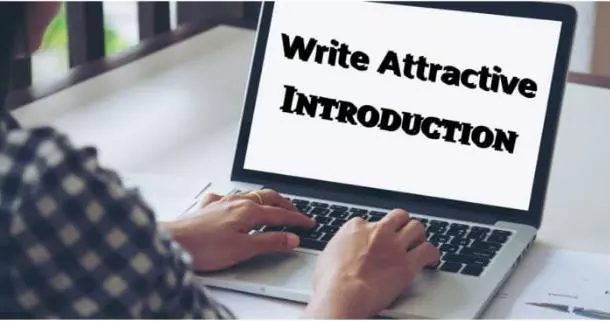An introduction plays a key role in setting the pace for the essay paper. In this guide, we will explore whether an introduction of an essay can have more than one paragraph and give you tips on how to do it well.
The length of the paragraph should correspond to the size of the essay paper. For instance, you can have a single introduction paragraph if your essay is short.
A more complex paper can have more than one introduction paragraph if you are expounding on the topic.
The Optimal Length of the Introduction Paragraph
1. Best Length for Intro of a Short Essay
When you are writing a short essay, you would want to be price about giving the background information.
For example, if you are crafting a five-paragraph essay, it can be appropriate to retain a single-paragraph introduction. It gives you an allowance to have other items in the body to capture all corners.
2. Long Essay
A long essay can even take more than 20 pages. That means that you will be handling a wide topic.
In such a situation, it will be great to hook the reader by giving more details in the introduction. Such introductions may exceed more than one paragraph.
3. Research Paper
Here, an introduction can be long or moderate as long as the author wants to express the main idea in the introduction paragraphs.
There exist no rule for a paragraph. Some can extend to 150 words. However, for readability reasons, you can opt to divide it into smaller ones and make it more than one.
4. Thesis or a Dissertation
Readers like to respond in short paragraphs. Suppose your dissertation exceeds 5000 words, then it calls for as many paragraphs as you can
Suppose you what to hook the reader within the introduction, then you should use many introduction paragraphs to make your idea clear to the audience. For this case, a thesis can have more than one introductory paragraph.
Factors Determining the Length of an Introduction Paragraph
An introduction paragraph can either be long or short depending on many factors as detailed below:
1. The Type of the Hook
Sometimes it needs the skill to catch the reader’s attention and engage them throughout the content of your essay. Having a hook is one of the best ways to start an essay and get the attention of the reader. This makes it important for a good essay.

The type of the hook determines the length of the introduction part of an essay.
Some hooks are long, others are short. The hook could be short or long as per the writer’s preference.
Typically, a hook should tell you what the topic is all about, and the approach one is taking to pass the message should be straightforward.
The hook can belong if you want to broaden the details of the topic in an engaging manner. It should state the general statement of the topic.
2. The Context of the Essay
By context, we mean extra details you use to reveal the particular focus of your paper. It can only be effective if it assists the reader in knowing what you will be talking about in the essay. The author can include anywhere within many sentences within the introduction paragraphs.
Just like the hook above, the hook can decrease or increase the length of the introduction paragraph. That is so because you will be describing a specific issue about your topic.
3. Topic Complexity
Some essay papers could be handling a simple or complex topic. For the case of a simple topic, it is easier to make a short introduction paragraph.
On the contrary, handling a complex topic may call for a longer introduction to enable the reader to have an overview of what is in the offing.
d) Type of the Paper
Various papers can have different lengths of introductions. For example, you cannot expect a research paper with fifteen pages to have the same introduction as a two-paper essay paper. You must balance the introduction with the length of the words that your paper is carrying.
How to Write a Good Introduction Paragraph
After creating a title and the abstract, the next challenge thing is to write the introduction. One needs to know what to include to engage the audience. In this section, we will be giving you some useful tips to make the essay worth reading.

1. Begin Broadly
The author should make the first paragraph describe in brief what the research area is all about.
However, ensure to narrow it down to a specific focus.
One should strategically position them to make them accessible to the audience.
At this point, you should state the aim and the significance of the topic to the reader. As such, you will be motivating the reader who wants to understand the gains of the topic.
The writer should say what he intends to achieve and encourage the reader to follow it to the end for further elaboration.
2. Hook the Reader
The first sentence should set the pace and the tone of the essay. Again, spend quality time to craft a compelling hook. It is not advisable to use long sentences at this point. Begin with a concise and clear sentence to spark the reader’s attention.
Let the hook direct the reader to follow the essay by giving a topical sense. You should avoid broad claims because they may draw the audience into confusion.
3. Offer Background Information
Another aspect worth noting is to giving context to the audience. Such an argument helps whoever is reading to know what that topic is all about. It should have a historical, social, or geographical context.
The information in this part should be the outline of what you intend to say in the write-up. Furthermore, it should summarize the research about the topic. Most times, it should include the key definition terms.
Avoid giving too many details in this area as you will elaborate more in the essay body.
4. Present the Thesis Statement
Also, tell the audience what you are saying about the topic. The thesis statement will summarize the overall arguments as it is the most significant part of the introduction. The aim is to help you to convey your position about your central point.
5. Keep Introduction Short
There lacks a specific limit on how the introduction should be when you are writing your essay.

Let the first sentences be short of setting the stage for the article.
Readers respond well to shorter sentences because they are impatient to read through the long article effectively.
The great strategy is to avoid burying the key idea in the deep of the article.
Give a hint in the introduction to entice the reader who is looking for that information.
6. Dedicate Special Sentences
One can dedicate at least one or two sentences to talks about what the article is covering. It is necessary to layout such sentences to assist the reader in knowing what to expect in the essay.
That determines if the reader will scroll through other parts or not depending on you presented it.
7. Refer to a Concern a Reader may Have
The introduction is a perfect place to pull the pain point of the reader. Even better, you should encourage the reader to peruse the essay to discover the solution to what the problem is all about. The writer should communicate the problem and be sympathetic to the reader.
8. Check Journal Requirements
Different journals have varying requirements in the introductions. For instance, some usually state the maximum word count that should appear in the introduction. Some of the guidelines might include specific content. It should be a summary of the main results.
9. Use Statists
Finally, it is important to communicate the statistics to give the importance of your research to the reader. Look for eye-catching statistics and make them real to the reader to covey a clear idea that uplifts the understanding.

Joseph is a freelance journalist and a part-time writer with a particular interest in the gig economy. He writes about schooling, college life, and changing trends in education. When not writing, Joseph is hiking or playing chess.
